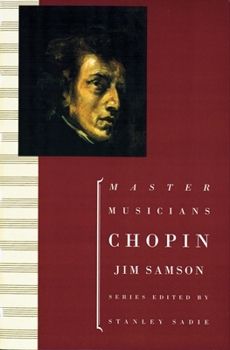Book Overview
Celebrating its 100th anniversary, this extraordinary series continues to amaze and captivate its readers with detailed insight into the lives and work of music's geniuses. Unlike other composer biographies that focus narrowly on the music, this series explores the personal history of each composer and the social context surrounding the music. In a precise, engaging, and authoritative manner, each volume combines a vivid portrait of the master musicians' inspirations, influences, life experiences, even their weaknesses, with an accessible discussion of their work-all in roughly 300 pages. Further, each volume offers superb reference material, including a detailed life and times chronology, a complete list of works, a personalia glossary highlighting the important people in the composer's life, and a select bibliography. Under the supervision of music expert and series general editor Stanley Sadie, Master Musicians will certainly proceed to delight music scholars, serious musicians, and all music lovers for another hundred years.
In this profound look at Chopin, Jim Samson interweaves biographical and musical commentary to produce a well-rounded portrait the man and the musician. Incorporating the most recent research, it succeeds in presenting it without recourse to unduly complex technical language. Samson addresses such questions as pedagogy, musical influences, and pianistic idiom. He examines the composer's mature musical style, considers his unique approach to the genres of nineteenth-century piano music, and investigates the nature of his compositional process as revealed through manuscripts and early printed scores. Readers to understand why this frail and fastidious musician from Warsaw, whose music is so immensely refined and innovatory, has captured the imagination of generations of music lovers the world over.
In this profound look at Chopin, Jim Samson interweaves biographical and musical commentary to produce a well-rounded portrait the man and the musician. Incorporating the most recent research, it succeeds in presenting it without recourse to unduly complex technical language. Samson addresses such questions as pedagogy, musical influences, and pianistic idiom. He examines the composer's mature musical style, considers his unique approach to the genres of nineteenth-century piano music, and investigates the nature of his compositional process as revealed through manuscripts and early printed scores. Readers to understand why this frail and fastidious musician from Warsaw, whose music is so immensely refined and innovatory, has captured the imagination of generations of music lovers the world over.
Format:Paperback
Language:English
ISBN:0198167032
ISBN13:9780198167037
Release Date:March 2001
Publisher:Oxford University Press
Length:334 Pages
Weight:0.05 lbs.
Dimensions:0.8" x 6.0" x 9.0"
Customer Reviews
1 rating
Good mix of criticism and biography
Published by Thriftbooks.com User , 25 years ago
The primary focus of this book is not biography, although it is structured in alternating chapters with biographical information followed by analysis of the music of a given period. Other books (Tad Szulc's Chopin in Paris, for instance) might give a better impression of Chopin's daily life, but this book does a fine job of relating the life to the music. The musicological passages are fairly sophisticated -- a grounding in music theory is assumed -- but if you have such a grounding, there are fine insights to be found here. I was most pleased, for instance, to note that Sampson had observed the similarities between the Nocturne in F (Opus 15 #1) and the Ballade #2 in A Minor, something I had long been aware of but had not seen addressed in Chopin criticism.Samson's examination of genre is illuminating too -- he tries to perceive Chopin's music not as an absolute frozen in amber, but rather from the perspective of its own time, an era full of contrasting and overlapping genre conventions.






